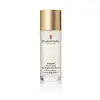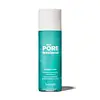What's inside
What's inside
 Key Ingredients
Key Ingredients

 Benefits
Benefits

 Concerns
Concerns

No concerns
 Ingredients Side-by-side
Ingredients Side-by-side

Water
Skin ConditioningPropanediol
SolventButylene Glycol
HumectantPentylene Glycol
Skin ConditioningGlycerin
HumectantIsononyl Isononanoate
EmollientAlcaligenes Polysaccharides
EmollientAmodimethicone
Calanthe Discolor Extract
Skin ConditioningCalcium Gluconate
HumectantCamellia Japonica Seed Oil
EmollientCandida Bombicola/Glucose/Methyl Rapeseedate Ferment
AntimicrobialCaprylic/Capric Triglyceride
MaskingCarbomer
Emulsion StabilisingCastor Oil/Ipdi Copolymer
Disodium EDTA
Gluconolactone
Skin ConditioningLimnanthes Alba Seed Oil
Skin ConditioningMaltodextrin
AbsorbentMaris Sal
Skin ConditioningOphiopogon Japonicus Root Extract
Skin ConditioningPolyacrylate Crosspolymer-6
Emulsion StabilisingSodium Carrageenan
Emulsion StabilisingSodium Hydroxide
BufferingTocopherol
AntioxidantXanthan Gum
EmulsifyingChlorphenesin
AntimicrobialPhenoxyethanol
PreservativeWater, Propanediol, Butylene Glycol, Pentylene Glycol, Glycerin, Isononyl Isononanoate, Alcaligenes Polysaccharides, Amodimethicone, Calanthe Discolor Extract, Calcium Gluconate, Camellia Japonica Seed Oil, Candida Bombicola/Glucose/Methyl Rapeseedate Ferment, Caprylic/Capric Triglyceride, Carbomer, Castor Oil/Ipdi Copolymer, Disodium EDTA, Gluconolactone, Limnanthes Alba Seed Oil, Maltodextrin, Maris Sal, Ophiopogon Japonicus Root Extract, Polyacrylate Crosspolymer-6, Sodium Carrageenan, Sodium Hydroxide, Tocopherol, Xanthan Gum, Chlorphenesin, Phenoxyethanol
Water
Skin ConditioningHamamelis Virginiana Leaf Water
AstringentNiacinamide
SmoothingPentylene Glycol
Skin ConditioningPropanediol
SolventButylene Glycol
HumectantIsononyl Isononanoate
EmollientCoco-Caprylate/Caprate
EmollientLimnanthes Alba Seed Oil
Skin ConditioningCarbomer
Emulsion StabilisingOryza Sativa Extract
AbsorbentCastor Oil/Ipdi Copolymer
Chlorphenesin
AntimicrobialBisabolol
MaskingSodium Hyaluronate
HumectantSodium Hydroxide
BufferingTocopheryl Acetate
AntioxidantCamellia Japonica Seed Oil
EmollientSaccharomyces Ferment Lysate Filtrate
Skin ConditioningCaprylic/Capric Triglyceride
MaskingCitric Acid
BufferingTrisodium Ethylenediamine Disuccinate
Parfum
MaskingSodium Benzoate
MaskingPolyacrylate Crosspolymer-6
Emulsion StabilisingRosa Canina Fruit Extract
AstringentPotassium Sorbate
PreservativeCaramel
Cosmetic ColorantAmodimethicone
Candida Bombicola/Glucose/Methyl Rapeseedate Ferment
AntimicrobialCitrus Junos Fruit Extract
Skin ConditioningTocopherol
AntioxidantCI 42090
Cosmetic ColorantPentaerythrityl Tetra-Di-T-Butyl Hydroxyhydrocinnamate
AntioxidantWater, Hamamelis Virginiana Leaf Water, Niacinamide, Pentylene Glycol, Propanediol, Butylene Glycol, Isononyl Isononanoate, Coco-Caprylate/Caprate, Limnanthes Alba Seed Oil, Carbomer, Oryza Sativa Extract, Castor Oil/Ipdi Copolymer, Chlorphenesin, Bisabolol, Sodium Hyaluronate, Sodium Hydroxide, Tocopheryl Acetate, Camellia Japonica Seed Oil, Saccharomyces Ferment Lysate Filtrate, Caprylic/Capric Triglyceride, Citric Acid, Trisodium Ethylenediamine Disuccinate, Parfum, Sodium Benzoate, Polyacrylate Crosspolymer-6, Rosa Canina Fruit Extract, Potassium Sorbate, Caramel, Amodimethicone, Candida Bombicola/Glucose/Methyl Rapeseedate Ferment, Citrus Junos Fruit Extract, Tocopherol, CI 42090, Pentaerythrityl Tetra-Di-T-Butyl Hydroxyhydrocinnamate
 Reviews
Reviews

Ingredients Explained
These ingredients are found in both products.
Ingredients higher up in an ingredient list are typically present in a larger amount.
This water-soluble silicone is used for its hydrating and softening properties. It is used to add a silky feel to skincare products and has great benefits for haircare.
In haircare, this ingredient:
- Adds shine
- Protects color
- Offers thermal protection
- Boosts hair strength
- Does not build up as easily
Butylene Glycol (or BG) is used within cosmetic products for a few different reasons:
Overall, Butylene Glycol is a safe and well-rounded ingredient that works well with other ingredients.
Though this ingredient works well with most skin types, some people with sensitive skin may experience a reaction such as allergic rashes, closed comedones, or itchiness.
Learn more about Butylene GlycolCamellia Japonica Seed Oil comes from the Japanese Camellia plant. This plant is native to East Asia and known as "Tsubaki" in Japanese.
Camellia Japonica Seed Oil is rich in oleic acid. This makes it a great emollient. Emollients help soften and soothe the skin by forming a barrier. This barrier traps moisture within, keeping your skin hydated.
We don't have a description for Candida Bombicola/Glucose/Methyl Rapeseedate Ferment yet.
This ingredient is an emollient, solvent, and texture enhancer. It is considered a skin-softener by helping the skin prevent moisture loss.
It helps thicken a product's formula and makes it easier to spread by dissolving clumping compounds.
Caprylic Triglyceride is made by combining glycerin with coconut oil, forming a clear liquid.
While there is an assumption Caprylic Triglyceride can clog pores due to it being derived from coconut oil, there is no research supporting this.
Learn more about Caprylic/Capric TriglycerideCarbomer is a polymer of acrylic acid. Its main role is to create a gel consistency.
A high amount of carbomer can cause pilling or balling up of products. Don't worry, most products contain 1% or less of carbomer.
Castor Oil/Ipdi Copolymer is an oil and isn't fungal acne safe.
Chlorphenesin is a synthetic preservative. It helps protect a product against bacteria in order to extend shelf life. In most cases, Chlorphenesin is paired with other preservatives such as phenoxyethanol and caprylyl glycol.
Chlorphenesin is a biocide. This means it is able to help fight the microorganisms on our skin. It is also able to fight odor-releasing bacteria.
Chlorphenesin is soluble in both water and glycerin.
Studies show Chlorphenesin is easily absorbed by our skin. You should speak with a skincare professional if you have concerns about using Chlorphenesin.
Learn more about ChlorphenesinIsononyl Isononanoate is a synthetic skin-conditioner and texture enhancer. It is created from nonanoic acid, a fatty acid found in cocoa and lavender oil.
As an emollient, Isononyl Isononanoate helps keep your skin soft and smooth. This is because emollients create a barrier on the skin to trap moisture in.
Isononyl Isononanoate helps give products a velvet feel and improves spreadability.
Learn more about Isononyl IsononanoateLimnanthes Alba Seed Oil is the oil extracted from the seeds of the meadowfoam plant. This oil is non-fragrant and is an emollient. As an emollient, meadowfoam seed oil helps soften and hydrate the skin.
Meadowfoam seed oil is stable and has a long shelf life due to its chemical structure. It has the highest concentration of stable fatty-acids among plant oils, preventing it from degrading once exposed to oxygen.
Due to the fatty acid content, this ingredient may not be fungal-acne safe.
Meadowfoam is native to California and Oregon.
Learn more about Limnanthes Alba Seed OilPentylene glycol is typically used within a product to thicken it. It also adds a smooth, soft, and moisturizing feel to the product. It is naturally found in plants such as sugar beets.
The hydrophilic trait of Pentylene Glycol makes it a humectant. As a humectant, Pentylene Glycol helps draw moisture from the air to your skin. This can help keep your skin hydrated.
This property also makes Pentylene Glycol a great texture enhancer. It can also help thicken or stabilize a product.
Pentylene Glycol also acts as a mild preservative and helps to keep a product microbe-free.
Some people may experience mild eye and skin irritation from Pentylene Glycol. We always recommend speaking with a professional about using this ingredient in your routine.
Pentylene Glycol has a low molecular weight and is part of the 1,2-glycol family.
Learn more about Pentylene GlycolPolyacrylate Crosspolymer-6 is a texture enhancer and pH adjuster.
It is be used to thicken water-based products and create a gel-texture with a velvet feel.
One manufacturer claims this ingredient to have a pH range of 2-8 and to be biodegradable.
Learn more about Polyacrylate Crosspolymer-6Propanediol is an all-star ingredient. It softens, hydrates, and smooths the skin.
It’s often used to:
Propanediol is not likely to cause sensitivity and considered safe to use. It is derived from corn or petroleum with a clear color and no scent.
Learn more about PropanediolSodium Hydroxide is also known as lye or caustic soda. It is used to adjust the pH of products; many ingredients require a specific pH to be effective.
In small amounts, sodium hydroxide is considered safe to use. However, large amounts may cause chemical burns due to its high alkaline.
Your skin has a natural pH and acid mantle. This acid mantle helps prevent harmful bacteria from breaking through. The acid mantle also helps keep your skin hydrated.
"Alkaline" refers to a high pH level. A low pH level would be considered acidic.
Learn more about Sodium HydroxideTocopherol (also known as Vitamin E) is a common antioxidant used to help protect the skin from free-radicals and strengthen the skin barrier. It's also fat soluble - this means our skin is great at absorbing it.
Vitamin E also helps keep your natural skin lipids healthy. Your lipid skin barrier naturally consists of lipids, ceramides, and fatty acids. Vitamin E offers extra protection for your skin’s lipid barrier, keeping your skin healthy and nourished.
Another benefit is a bit of UV protection. Vitamin E helps reduce the damage caused by UVB rays. (It should not replace your sunscreen). Combining it with Vitamin C can decrease sunburned cells and hyperpigmentation after UV exposure.
You might have noticed Vitamin E + C often paired together. This is because it is great at stabilizing Vitamin C. Using the two together helps increase the effectiveness of both ingredients.
There are often claims that Vitamin E can reduce/prevent scarring, but these claims haven't been confirmed by scientific research.
Learn more about TocopherolWater. It's the most common cosmetic ingredient of all. You'll usually see it at the top of ingredient lists, meaning that it makes up the largest part of the product.
So why is it so popular? Water most often acts as a solvent - this means that it helps dissolve other ingredients into the formulation.
You'll also recognize water as that liquid we all need to stay alive. If you see this, drink a glass of water. Stay hydrated!
Learn more about Water